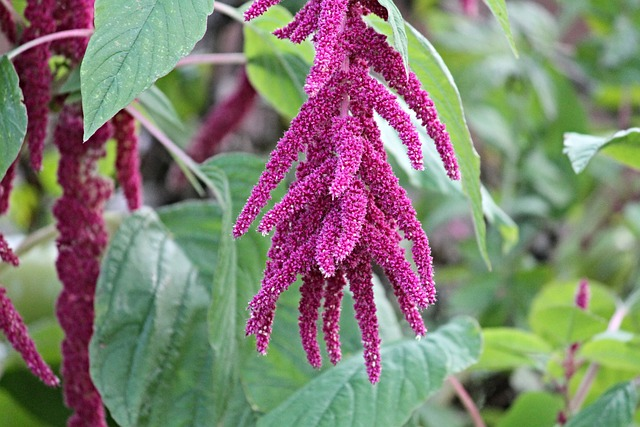
Secretly tucked away on the grocery store shelves there is a nutritional powerhouse that you should be paying attention to. The ancient Aztecs had a secret weapon in their quest to dominate the region: amaranth. This little-known superfood was a key part of their diet, and now we're uncovering the benefits of this powerful grain. From its nutrient-rich composition to its potential health benefits, amaranth is a hidden gem that deserves our attention. Stay tuned as we explore the history and benefits of this fascinating food called amaranth.
There are over 70 species of amaranth
While there are over 70 Amaranthus species of genus Amaranthus, only a few are commonly used for food. The few species that are used as grain are collectively known as grain amaranth. Many of the others are wild or are used for ornamental purposes. You could also try to plant amaranth in your yard for its beauty! The ornamental plant can grow up to 6ft tall. So be sure to give it lots of space in your graden.

There are dozens of wild species of amaranth plants, along with the few domesticated varieties we use today. While the plant amaranth is native to every continent except Antarctica, it was the Aztecs of Central America that domesticated the plant and turned it into what we recognize today. It is still an important food crop in central America. This means you should take care to establish which kind of amaranth you may find out in the wild before trying to forge for your own seeds!
The ancient Aztecs were onto something when they cultivated amaranth as a staple in their diet
The Aztecs had a varied diet which included chia seeds, amaranth, and other staple foods which were eaten on a daily basis. Amaranth was also a common food eaten by the Aztecs and was used to make a type of gruel. Both chia seeds and amaranth were important sources of protein, vitamins, minerals and other essential nutrients. They were also a common ancestor to many foods still eaten today. We talked more about plant-based protein here.
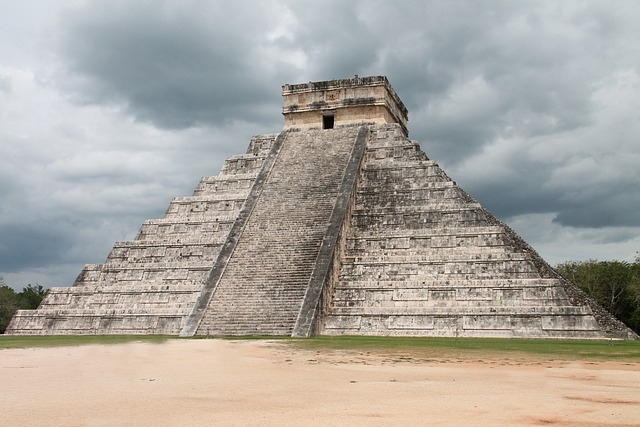
Although the Aztecs had access to a variety of foods, their staple diet consisted of maize, beans, squash, amaranth, and chilies. These foods were eaten on a daily basis and were a major source of nutrition for the people of the Aztec culture. The ancient Aztecs somehow knew that amaranth was an essential grain to grow and consume, centuries before modern society caught on. Through the historical record, we can see that the Aztecs moved amaranth throughout their empire.
This nutrient-rich seed was cultivated and consumed in Central and South America thousands of years ago and was typically associated with religious rituals.
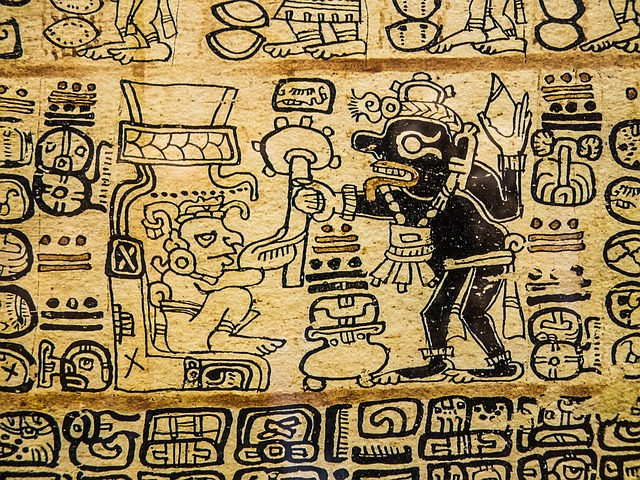
The Aztecs had a strong spiritual connection to the natural world, and they used amaranth in a number of rituals. They believed that the amaranth had healing powers, so they would mix it with honey or water and use it as a healing salve. They also used the amaranth in religious ceremonies; they would grind it into a meal and then shape it into figurines of gods and goddesses. The figurines were then burned as a form of offering. Cooked amaranth seeds was also consumed in a porridge-like dish as part of celebrations and festivals. Can you imagine what that looked like?
Amaranth grain is considered to be one of the oldest grains in the world-- evidence suggests it has been a dietary staple as far back as 8,000 B.C.
We can't help but wonder how the Aztecs knew amaranth was so special all those years ago! The grain was so important that is spread throughout north and central America. Ancient grains like amaranth are sometimes said to be even healthier than their modern counterparts.
This superfood is packed with nutrients and has numerous health benefits
When we think about conventionally grown grains, we get a sense of lacking nutrition from our flour aisle. Wheat flour has dominated American grocery store shelves since the time of the general store. But indigenous plants like amaranth are starting to take the general public by storm. Amaranth nutrition is impressive - high in protein and iron, making it a tasty and small package for anyone looking for an added nutritional boost. It also contains all 9 essential amino acids! Those amino acids, in turn, will help the body build and repair muscles, aid in digestion, and help keep the immune system in tip-top shape. We talked more about amnio acids and their connection to collagen production here. Amaranth is a super food that can possibly keep you looking younger too!
Amaranth grains are a gluten-free alternative to wheat!
Amaranth can be safely eaten by those with celiac disease who generally have difficulty finding the right foods that don't contain any gluten. So, if gluten free foods are what you’re looking for, know that amaranth has all the necessary ingredients to help improve your lifestyle and provide nutritional stability throughout your days. Amaranth seed flour can be used as a replacement for wheat flour. However, you'll need to add additional binders to your amaranth flour recipe to achieve the same texture as wheat flour.
Various amaranth species are used as food crops around the world
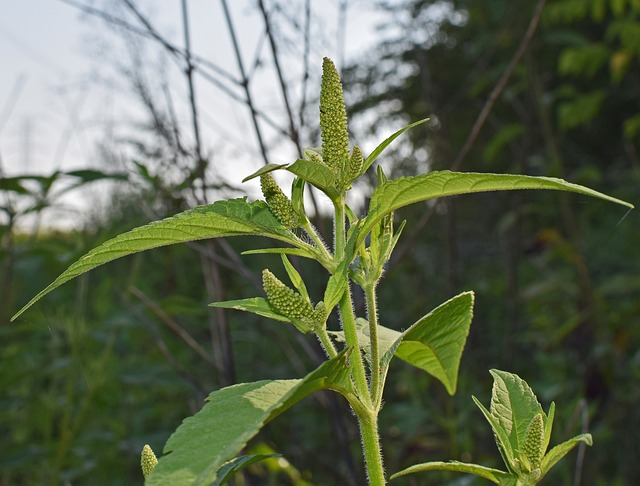
Amaranth seeds are a nutritious, gluten-free crop that is widely grown in many parts of the world. It is a valuable source of vitamins and minerals, especially iron, and is often used as a staple food. It is a versatile crop, and can be ground into flour, popped like popcorn, or cooked as a grain. Amaranth also has a long shelf life and can be stored for months or even years. In many cultures, amaranth crop is valued and is used in a variety of dishes.
Interestingly, in West Africa the amaranth plant is grown mainly for amaranth greens. Amaranth greens are highly nutritious and used similarly as other leafy greens. Eaten raw or stewed, I can't wait to get my hands on amaranth greens to try!
Amaranth seeds can be easily incorporated into your diet in many different ways
Making one cup of amaranth seeds a part of your weekly diet is one of the best-kept secrets to achieving optimal health. Boiled like rice or puréed in soups and stews, it can easily be incorporated into different meals. From being added to steamed vegetables, to being combined with black beans, corn, or other whole grains like quinoa, the possibilities are endless. Make sure to consume it in its whole grain form for maximum nutritional value.
Why not try out amaranth for your next Saturday breakfast? Try cooking the amaranth like whole grain oatmeal and adding in your favorite berries or seasonal fruit! Or put Amaranth Taco bowls on the menu for Taco Tuesdays. Top your amaranth "rice" with black beans, pickled red onion, seasoned meat or plant-based meat, and cheese! Don't forget your favorite salsa too! You can always add popped amaranth to any dish to add a new texture. Like puffed rice, amaranth can add textural interest to a dish like seared salmon, or even baked macaroni and cheese! Have you ever thought to add popped amaranth to tuna noodle casserole?
Amaranth seeds contains important food components that provide essential vitamins (such as B vitamin) and minerals to keep the body running properly. With its abundant and powerful seeds, amaranth can make an impact on your overall wellbeing if included as a regular part of your diet.
Here are some recipes to get you started on enjoying the benefits of amaranth!
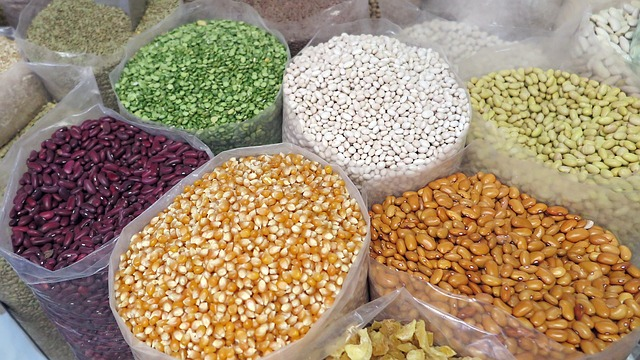
Are you looking to add something new to your diet, yet not too exotic or unfamiliar? Why not try amaranth! This ancient grain has been a staple for many cultures for centuries and boasts plenty of nutritional benefits. There are various ways to cook amaranth. The amaranth recipes you'll find here are simple but full of flavor; from amaranth flour in pancakes, to popped amaranth in savory dishes, amaranth greens in salads to amaranth and beans with corn—all bringing on the health and taste benefits amaranth offers. Join us in rediscovering this forgotten grain and enjoy the savory benefits amaranth brings!
The ancient Aztecs were way ahead of their time when they cultivated amaranth grain as a staple in their diet
This superfood is packed with nutrients and has numerous health benefits that are only now being realized by the modern world. Amaranth can be easily incorporated into your diet in many different ways, so there’s no excuse not to start reaping the benefits of this amazing grain! Do you plan on incorporating amaranth into your diet? Let us know in the comments below how you have become an amaranth convert!
This article may contain affiliate links. Be sure to discuss and new diet or exercise regimen with your physician.
Comments
Post a Comment